The Settle-Carlisle Line’s near 150-year-old story has always been one defined by its remarkable survival. Renowned for being one of the world’s most scenic railway journeys, it is now every bit as famous for its powers of endurance.
The S&C’s most celebrated victory came in April 1989, when Michael Portillo memorably announced its last-minute reprieve from a closure that had been eagerly sought by an ever-economising British Rail. What is less well known, perhaps, is the hard-won reputation already earned by the line for seeing off mortal threats, even before the first train steamed over the 72-mile ‘Long Drag’ in August 1875.
The irony is not lost on railway historians that almost exactly 120 years before Margaret Thatcher’s Transport Minister called a formal end to BR’s cost-cutting campaign of the 1980s, a very different government was using its parliamentary clout to bring the line into existence. Indeed, it was only at the insistence of Liberal Prime Minister William Gladstone that the line was even built in the first place.
Nervous of the colossal (and still mounting) construction costs, Parliament had to force a reluctant Midland Railway to put its hands in its pockets by refusing a petition to overturn the approval granted to build it in 1866 (thus scoring a first crucial victory for the S&C).
Back in the present, and a more elemental force now looms large over the continued operation of the line… Mother Nature.
A marvel of Victorian engineering, the line’s succession of 14 tunnels, 17 viaducts and a ruling gradient of no more than 1:100 ensured a swift journey for Anglo-Scottish traffic through northern England’s Pennine interior. But it also restricted the Midland Railway’s route surveyors and Chief Engineer John Crossley, resulting in some perplexing design conundrums in order to tame the undulating terrain and challenging geology through which the S&C had to pass.
The best example of this lies eight miles south of Carlisle, where the line continues on its long but gentle descent into the city from the 1,169ft windswept summit at Ais Gill. Here the railway runs along the top of a steep gorge in the Eden Valley, some 60 metres above the riverbed. The two tracks perch precariously on a ledge carved into the precipitous valley side, before safely burrowing back into the surrounding hillsides.
It is hardly the most structurally sound place to build a railway, but the strict parameters set for gradient and curve radiuses (plus the ever-present financial considerations) precluded tunnelling into the hillside on a different alignment, or running further down the slope nearer to the shallow but meandering valley bottom.
Until February, the name of this place at Eden Brows was almost unheard of, and understandably overshadowed on a line more treasured for majestically sweeping viaducts at Ribblehead, Smardale, Dent Head and elsewhere, as well as for its well-appointed Midland Gothic station buildings.
But swelled by a succession of fierce winter storms (named Desmond, Eva and Frank), the River Eden had spectacularly burst its banks, causing large parts of Cumbria to remain flooded throughout much of December 2015 and into the New Year. Although well below the railhead, this increased hydraulic force set about eroding the valley side with great effectiveness, thus undermining the base of the vast slope upon which the railway sits.
Gravity duly took over and triggered a slow-moving landslide, lubricated by record amounts of rainfall that continued to fall on already saturated ground. When Network Rail first closed the railway on February 4, after a twist fault was detected in the Up line nearest the cliff edge, it was estimated that 500,000 tonnes of material had moved - almost 100 times the tonnage that fell into the sea at Dawlish two years earlier. The Down line was kept open for a further five days with a 5mph speed limit, before that too was shut for safety reasons.
Geological surveys made by aerial drones and borehole testing showed an area measuring 150 metres x 70 metres to be affected. More seriously, the entire formation had slumped by 1.5 metres, and was still moving. NR said the ground would need to stabilise before it could devise a permanent fix or announce an accurate timescale for re-opening. Dawlish may have taken six weeks to repair, but this section of the network would have to be shut indefinitely.
The line was initially closed between Appleby and Carlisle. Although 22 miles south of the landslip, Appleby was deemed by operator Northern to be the best place to transfer northbound passengers onto rail replacement bus services, owing to the availability of welfare facilities, mess rooms for train crew and a crossover point. Bus services would run the remaining 30 miles calling at all intermediate stops, but would need to negotiate narrow roads in order to reach these scattered rural communities - with some considerable time penalty.
Following a sharp drop in the number of passengers, the decision was made in June to extend some services as far north as Armathwaite - they would then run wrong line back to Appleby to access the crossover to regain the Up line back to Leeds.
Passengers were also now given two options: to connect with replacement bus services for the short eight-mile journey to Carlisle from the more northerly terminus of Armathwaite, or to switch at Appleby for direct bus services to Carlisle via Penrith and the M6. The introduction of heavily discounted Settle-Carlisle Day Ranger and Rail Rover tickets by Northern would also help contribute to a modest recovery in passenger numbers.
Unlike 1989, when the considerable cost of repairing Ribblehead Viaduct was used to justify full closure of the line, there was never any doubt that Network Rail would dig deep and fund the necessary repairs. In 2015 the S&C carried more passengers and freight than it had in several decades, and operated around the clock with more than 1.3 million passengers a year, eight daily passenger services in each direction and 40 available freight paths per day.
It offers an essential diversionary route for both the East Coast and West Coast Main Lines. And since the dark days of rationalisation and the ‘maintenance holidays’ of the 1980s, millions have been spent to double signalling capacity and renew track and infrastructure, put back removed loops, and increase the overall line speed to 60mph.
In July NR announced that it had finalised its repair solution, having carefully considered six potential options including a significant alteration to the course of the S&C, and even replacing the entire embankment at Eden Brows with a new viaduct.
At a cost of £23 million, engineers had decided to build a concrete slab 1.5 metres thick and 100 metres long, sitting just below the railway. It will be held in place by two rows of steel piles filled with concrete, driven up to 20 metres into the ground to anchor it firmly into the bedrock of the gorge. A further £5m earthworks project was also given the go-ahead, to re-profile the embankment and protect its base from further erosion by the River Eden.
Having appointed Story Contracting, NR then set out a comprehensive construction sequence. It expects the line to re-open in March 2017.
RAIL was invited to head north and view the works on August 31, traveling on the 1049 from Leeds.
The train sheds most of its passengers during station calls at the large commuter towns of Bingley and Keighley (it had only been a quarter full in the first place), and just 30 minutes into the journey, at the northwestern extremity of Leeds’ electrified Metro network at Skipton, only two of us are left in the carriage. The rain sets in and the gradients begin to get steeper, as the flat Aire Valley gives way to the rolling Yorkshire Dales - the first reminder of the harsh conditions faced by almost 6,000 navvies who toiled to build the S&C between 1869 and 1875.
At Settle, RAIL is joined by former Friends of the Settle-Carlisle Line (FoSCL) Chairman Mark Rand. Although another 20 or so passengers board here, Rand isn’t overly surprised by the lack of patronage on the four-car service. And neither is Northern guard Paul Charlesworth, as he makes another of his regular ticket inspections.
“We’re probably down by 60%-70% from normal. Quite often you would be standing at this time of year,” he tells RAIL. “It’s still the school holidays after all.
“But people don’t want to get on a bus, and that’s what it comes down to. When we were terminating at Appleby it took one hour and 20 minutes to get to Carlisle, and sometimes more. People were missing their connections to Glasgow and Edinburgh.
“It’s much better now we go up to Armathwaite, which is only about 30 minutes away. Or people can jump on the direct bus up the M6.”
Charlesworth adds: “With the cheaper Rover tickets, numbers have risen a little bit, making the most of the obvious magnificent views. And we’re still by far the cheapest way to get to Scotland.”
A quick calculation online shows this to be the case by some considerable margin, with a Leeds-Glasgow return costing £101.50 via any permitted route, and £55.90 if going via Appleby.
There are other encouraging signs that not all business has been lost since February. Just north of Settle we are passed by a southbound Class 66 hauling a train of empties from the British Gypsum facility at Kirkby Thore.
Moments later, just south of Horton-in-Ribblesdale, we pass GBRf 66779 Evening Star sitting in a siding at Arcow Quarry, at the head of a rake of ex-coal hoppers filled with aggregates. Reconnected to the S&C only late last year after losing its rail link in the 1960s, Arcow Quarry is a welcome sign that the S&C is once again generating home-grown freight traffic, even if it has lost its through flows for the time being.
Rand informs RAIL that a guided tour for a group of almost 50 tourists is taking place in the front coach, led by another member of FoSCL. Large bookings are happily still almost a daily occurrence - part closed or not, this line still has plenty to offer. He gives RAIL its own personal guided tour, and he goes into autopilot mode when we cross the mighty Ribblehead Viaduct.
Looking over the side, our attention is drawn to the faint grassy outlines of Navvy camps 100ft below, and named after Crimean War battlefields. It is a sobering thought that this is where 10% of the 2,000-strong workforce allocated to build this gargantuan structure succumbed to cholera, smallpox, or unfortunate industrial accidents caused by the newly discovered dynamite.
The commentary continues as we reach Dent, the highest main line station in England, and then Mallerstang signal box, where a signaller infamously played his part in causing the Ais Gill collision of 1913, in which 16 passengers perished.
Dent station is over four miles from (and 600ft higher than) the village it serves, while the close proximity of the Yorkshire Three Peaks is a graphic reminder of the original purpose of this line.
“People think that this is a line from Settle to Carlisle,” says Rand. “But it wasn’t done for that purpose, but to create a new route to Scotland as straight and level as possible. It was never intended to serve local communities.
“But it is this legacy that has caused Eden Brows, where they could have taken an easier route nearer to the riverbank, but they chanced their arm to build there at all. I imagine there was an arrogant element of ‘we are the Midland Railway and we can do what we want’.
“But we’re very much looking on the positive side of things. When we have through traffic back in March we will have a much better and resilient railway, which is incredible when you think that we were down to two inconveniently timed trains a day in the 1980s. It would have been curtains had Eden Brows happened in 1989, when it would have eclipsed the cost of rebuilding Ribblehead.
“And so it is very much short-term pain for long-term gain. It’s an act of God, but the collateral work being done is deeply appreciated and has sensibly been brought forward. Network Rail is using the blockade to complete other ancillary work and pre-scheduled projects, such as the installation of new barriers, wigwags and fencing at Culgaith Crossing and Low House Crossing.”
As we approach our destination at Armathwaite, the rugged sheep farming landscape of the fells has already given way to the dairy pastures of the lush green Eden Valley away to our right. The Up line has noticeably rusted in the six months since it has been worked, with all traffic turning around at Armathwaite and running wrong line back to the only available crossovers away to the south.
The handful of passengers disembarking here quickly transfer to the waiting road transport for the half-hour trip into Carlisle, before the diesel multiple unit is diagrammed to return to Appleby for an hour’s crew break.
RAIL is met by Network Rail’s scheme project manager Philip Middleton for the short two-mile drive to the worksite - accompanied by Rand, who will be taking pictures for the FoSCL quarterly magazine.
Located almost exactly at milepost 300, a thin strip of land in a field adjacent to the western boundary of the line has been commandeered by NR and Story Contracting. Here they have built the compound that will be expected to handle approximately 110 men and women from different trades across the duration of the project.
Fully kitted out and safety briefed, RAIL is whisked down to the remote main worksite on a ‘gator’ all-terrain vehicle, along some of the 1,400 metres of temporary roads specially built for this purpose.
NR and Story Contracting have worked closely with Natural England to obtain permission to work in what is normally protected woodland, and these roadways will need to be handed back to nature at the end of the project. Four badger setts were also located in the woods - they have been left undisturbed, with exclusion zones thrown around them for their protection.
On the way down to the landslip area we pass a road-rail vehicle (RRV) tipping earth into a wagon hauled by a Class 66. This is one of two weekly trains that NR has been running on the short northern stub of the severed route, to remove excavated spoil from the trackbed at Eden Brows to Carlisle Kingmoor Yard. It is by far the most efficient way to do this - one train carries the equivalent volume of 60 wagons being sent by road.
At the centre of activity, a 145m stretch of track has been lifted, and 9,000 tonnes of spoil have been removed to excavate the track bed to a depth of four metres below the railhead. Sharply falling away to the side, the steep wooded hillside is now partly bare where 2250m2 of vegetation has been cleared to enable ground monitoring.
Ever mindful of environmental considerations, and again working closely with Natural England, NR and Story Contracting moved quickly to get this job done in February and March before the start of the bird-nesting season.
Adam Monkhouse, the site manager for Story Contracting, joins us. “The project can be split into two really - corridor works to get the railway re-opened, and slope works to ensure there’s no more slippage,” he explains.
“We could probably have just shoved something quickly in the ground to keep the line open, but then found it had moved again in five years’ time. We did a lot of ground investigation to inform the right solution, so we don’t have to come back here and do it all again.”
Monkhouse points to scientific measuring equipment perched on a bank of earth above us, that uses lasers to continuously scan the hillside. He says that 10mm of slippage had been detected during the two days before our visit following a period of heavy rainfall, but seems unconcerned by the prospect of further movement.
“The bank re-profiling we’re going to do is designed to stabilise the bank, but even if it does move again the railway will not. The asset structure is designed to isolate itself, so this cannot happen again.”
An excavator is removing the last mounds of earth to enable piling to commence in November, although a small number of temporary piles have already been drilled in place to provide a stable foundation for the imminent arrival of the full-scale piling rigs.
It is estimated that 230 permanent piles will be needed in total, laid out in two rows - 130 on the river side and 100 on the cliff side. They will be 660mm in diameter and formed of reinforced concrete protected by steel outer casings. Their overall depth will be between 18 and 20 metres, of which the bottom 5.5m-7.5m will be encased in bedrock. Some 3,600 tonnes of concrete will need to be poured into the piles once they are in position.
The next stage will be to construct the vast concrete slab upon which the formation will sit. This will be 12m wide, 75m long and 3.15m deep, comprising 2,700 tonnes of concrete. The structure will then be buried in earth and the tracks put back on top.
Although the casings for the piles will be brought in by rail from Carlisle Kingmoor Yard, this staggering amount of concrete will need to be brought in by road on concrete mixers, and from December three or four wagonloads per day are set to arrive on site. Middleton says this is for efficiency, as it reduces the transit time between when the concrete is mixed and when it can be poured.
“We lose time and risk quality if we bring in material by road or rail and then mix it on site. The key thing now is getting the main piles in the ground, and then another assessment will be made in November when the first piles have gone in. When we’ve got a good idea of how long the first lot take, we will have a firmer idea of the final completion date.
“All of the other stuff like trackwork and signalling does not affect the critical path much, and even allowing for the weather we think we’ll be done by March.
“After that we will be on site for the re-profiling and slopework until the end of 2017. We need to put rock armour into the river once the salmon spawning season finishes, and then replant trees across the entire area, which will further stabilise the bank.”
Just before it’s time to leave, RAIL is beckoned to an area of ground upon which the excavator sits. Middleton and Monkhouse explain the hidden secrets of the Eden Brows trackbed that were only properly revealed once digging had begun.
Just below the ballast, clear strata can be discerned, made up of loose rubble and then sand. Eden Brows was the site of a large landslip during construction of the line in the early 1870s (see panel, page 80), with little known about the quality of the repairs made then. But it can quickly be deduced, without the need for a degree in soil mechanics, that the ledge here has been quickly patched up using materials excavated from nearby cuttings and tunnels - confirming suspicions that this was an historic weak spot and perhaps even an accident waiting to happen. These are crude measures by today’s standards, perhaps, but from a Victorian age before lasers, pile drivers and reinforced concrete.
Once complete, the buried structure at Eden Brows will offer little visible clue to the size of the task at hand. And following the re-openings at Lamington Viaduct and the Dover Sea Wall earlier this year, it remains until March the sole outstanding serious casualty of the 2015-16 winter storms.
But it’s been a battle all the same, and another fine victory for the S&C, which all being well can now be enjoyed for many more generations to come.

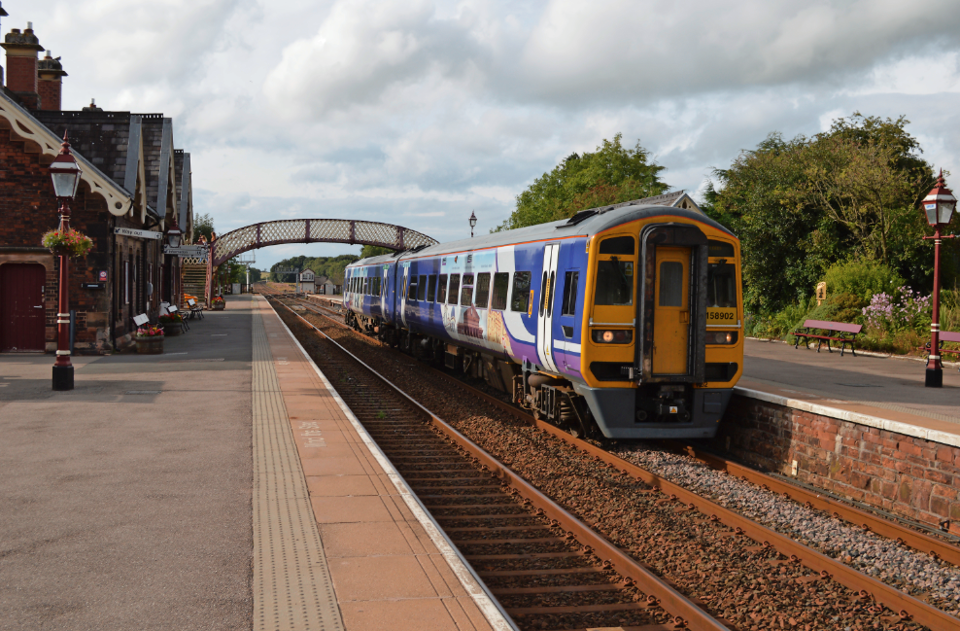
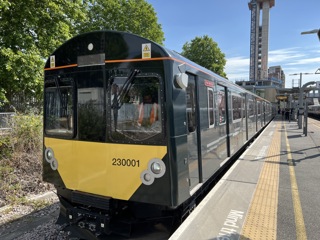
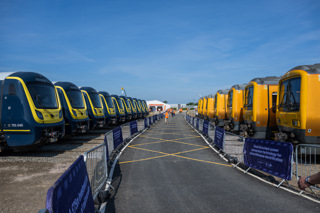
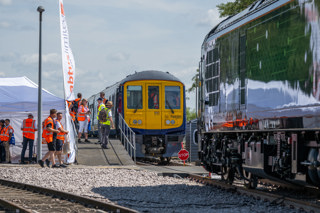

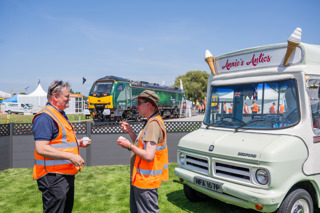











Login to comment
Comments
No comments have been made yet.